 |
Ground base for all our contributions and the main focus of LARES is the area of control theory. When a technology is established but struggles with maturity, fine system tuning and optimisation methods further contribute to power production, availability, efficiency but also provide integration tools and overall system improvement. Being part of the Advanced Control Team, our researches are focused on utilizing convex optimisation and model predictive control to all renewable energy systems. Briefly summarized, control theory uses mathematics to enforce certain wanted behaviour of systems. |
| |
|
 |
The buildings sector is crucial to the EU environment and energy policies as buildings use 40% of total EU energy consumption and generate about the same percentage of greenhouse gasses in Europe. The heating, ventilation and air conditioning (HVAC) systems are responsible for majority of the overall energy consumed in buildings. Use of advanced smart control methods to operate the HVAC systems is therefore crucially important to improve the energy-efficiency in the buildings sector. Reduction of the energy consumption in buildings by using Model Predictive Control (MPC) strategies is recognized as one of the essential solutions to achieve considerable energy savings. Besides the minimisation of the overall energy consumption, MPC can also contribute to energy peak reductions and consequently the cost of operation trimming. In average, more than 20% in reduction of building operation costs on a yearly basis is foreseen to be achieved and the improvement is expected to greatly and positively reflect on other sectors, most notably the power sector. |
| |
|
.png) |
Investments in renewable energy and storage technologies within different energy hubs must be planned in highly dynamic environments of technical and economical conditions surrounding these hubs, induced by high levels of intermittent renewable energy in the future energy systems. For that reason decision-making on how to size components in an energy hub must be performed jointly with deciding how to operate these systems through longer, usually yearly cycles. We have already developed several software packages for joint optimal sizing and operation of energy hubs and are developing them further in different combinations of engaged technologies. |
| |
|
 |
Renewable electrical energy sources (REES) have pronounced intermittency, which leads to problems in regulation of the power system. This problem exists both on a local production-storage-consumption level and on the power system level, and becomes more pronounced with the increasing contribution of REES in the total energy production. A natural solution is to derive a coordinated and dynamic planning strategy for production-storage-consumption of electric power. With a local information- and power-connection of REES, energy storage facilities, and consumers in a system – a microgrid – one can control resulting energy flows while considering techno-economical criteria and the local energy yield forecast. Solution of such problems – via optimization for microgrid design and control – will significantly improve the integration of REES on both the local and the utility grid level.
|
| |
|
 |
Transport systems are a clear example of complex technical systems that consume significant energy amounts so as to enable their inner processes to evolve as required. Requirements on dynamic functioning of these systems can be achieved by different system interactions with various criteria such as energy consumption, price of operation or equivalent pollution.
In railway traffic systems, each train can be controlled to achieve least travel costs while maintaining the time-table and travellers comfort. Meanwhile, the cost of electricity can be quite different in time, depending whether it is sourced from another train in breaking or from the electricity grid. The higher-level railway traffic coordination system is introduced for trains coordination with respect to external grid conditions, routes conditions, time-table requirements and trains current position on the routes. Computed energy consumption profile on the lower level directly maximizes the global economic gain of the system operation in the presence of system constraints (e.g. allowed temperatures or fixed train travelling time). This finally enables the proactive role of these largest consumers in energy grids of the future (smart grids).
|
| |
|
.png) |
Due to growing population and economy, seasonal climatic conditions have changed, including extreme events as floods and droughts. This affects as a whole the availability of water resources at world level. ICT and water efficiency is a key policy issue with potential for new research area that includes decision supporting system for the measurement of water quality and quantity including the recycling and water reuse processes. This necessitates increased interoperability between water information systems at EU and national levels and efficiency of water resources management. Advanced metering solutions, real-time consumption data and new data management technologies with real-time demand forecasting capability, consumption analysis, decision support systems, adaptive pricing and user empowerment solutions are incorporated so as to ensure the interoperability with energy and water management schemes and further enhance collaboration between key stakeholders. |
| |
|
.png) |
Wind energy has a significant share in electrical energy production with technology being a part of active research for decades. General challenges in wind energy field include: wind energy integration in the electrical grid, wind speed prediction in various time scales, wind farm operation and wind turbine control.
Nonlinearity of the wind turbine model as well as the high intermittency and variability of the wind resource results with necessity of complex control system design methods. Wind turbine control objectives often include energy efficiency maximisation and mechanical load alleviation, whereas process constraints satisfaction should be an imperative in order to increase the wind turbine life-cycle. Wind farms must have an ability to track the power reference demanded by the transmission system operator to fulfil the demands set in the new grid codes, whereas the wind farm controller should consider loads experienced by the wind turbines when distributing power references. High performance and reliable controllers are essential in order to increase competitiveness of the wind energy.
Stochastic and intermittent nature of the solar energy resource is an aggravating circumstance for the mass use of photovoltaic (PV) systems and their integration into utility grids. PV panels power production mainly depends on the available solar irradiance that reaches the surface of the PV panel in the form of the direct and diffuse irradiance. Proper control of power converters, devices between the panels and the remaining system, is crucial to achieve maximum efficiency in constantly changing operating conditions. The computation of trajectory for the PV panel active surface orientation throughout a day can be realized with pre-computed trajectories for the individual axes positioning systems based on weather forecast data or with the use of information on the current weather conditions with photo sensors.
Prediction of energy yield from a PV system is also very important for optimal exploitation of sun energy locally and in the electricity grid.
|
| |
|
 |
Exploitation of renewable energy through smart grids and microgrids greatly depends on distributed storage to enable time-shift between production and consumption. These distributed storage systems can also be used for electricity peak (price) shaving by buying and selling energy from/to the grid when it is most convenient for the end-user. A decision when to charge and discharge storages is a complex function of the predicted load, power production, and of the current storages state-of-charge. This function is also subject to various constraints like energy storages capacity, power converters power ratings, and even to utility grid possibly reduced availability. Different in capacity, power density and dynamics, several types of storage systems, such as batteries and hydrogen-based systems as well as their hybrid combinations are intensively researched in LARES through various aspects of modelling, sizing, short-term ahead planning and on-line autonomous operating.
|
| |
|
 |
Actual and upcoming climate changes will evidently have the largest impact on agriculture crops cultivation in terms of reduced harvest, increased costs, and necessary deviation from traditional farming. LARES extends its research and development efforts into the agricultural domain by leveraging advanced data analytics, artificial intelligence, and model-based optimization techniques. Our work in agriculture focuses on the design and implementation of decision support systems that enhance the efficiency, sustainability, and resilience of agricultural production. We employ methodologies such as predictive control, machine learning, and multi-objective optimization to support real-time and strategic decision-making related to crop management, resource allocation (e.g., water, fertilizers, energy), and environmental impact mitigation. These systems are developed in close collaboration with domain experts and tailored to the specific operational and climatic conditions of target agricultural systems. Through this interdisciplinary approach, LARES contributes to the digital transformation of agriculture, enabling data-driven practices that improve yield quality, reduce operational costs, and support long-term ecological balance. |



 Pristupačnost
Pristupačnost


.png)


.png)
.png)

